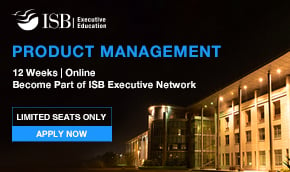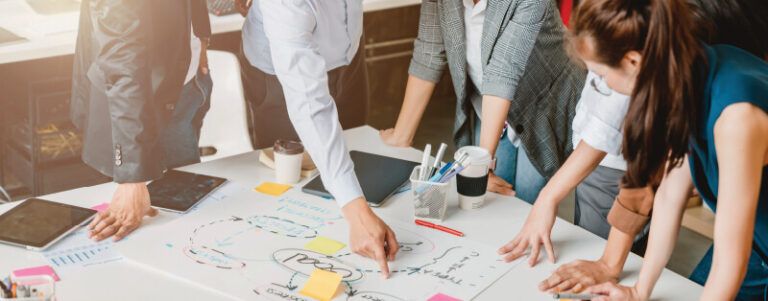Innovation in Action: A Step-by-Step Guide to Creating a Product Prototype

The product prototype is the blueprint for any product or product concept. It outlines a product’s features, performance, design, and functionality so potential buyers can understand how the final product will look and function. Developing a product prototype requires careful planning, research, and execution. This guide takes delves into each step of prototyping to ensure that a product is successful.
Benefits of Developing a Product Prototype
There are various benefits of developing a product prototype, such as:
- Developing a product prototype can help refine the idea’s design and give a physical representation of it. It helps ensure the product works as intended without any hindrance or issue.
- Product prototypes are also helpful for testing out how practical an idea is and whether or not it would be feasible in the long run, both financially and logistically. This is important since building an entire product could be very costly if it turns out that the idea isn’t viable after all.
- Prototypes allow for detailed feedback from potential customers about their preferences and opinions on certain product concept features. This information can improve existing designs or develop new ideas that could be more successful.
- They can also help speed up the manufacturing process since any necessary changes or improvements can already be identified during the prototype development stage itself and then implemented quickly when producing the final product. This helps reduce costs associated with production delays due to unforeseen issues arising later down the line.
- Finally, developing a prototype allows improved communication between all parties involved in the product development process. This is because everyone involved will better understand the project’s objectives, timelines, and requirements when working with an actual prototype instead of relying on verbal descriptions or rough sketches. As a result, this can help streamline processes and ensure that all members work towards the same goal.
Organizations can save time and money by developing these prototypes while ensuring product quality meets customer needs. Additionally, they allow testing product features before committing to a large-scale production run.
Also Read: How to Build a Successful Career as a Product Design Engineer: A Guide
How to Develop a Product Prototype?
Developing a product prototype requires careful planning and execution. Here are the key steps that should be followed to ensure success:
Step 1. Define Your Product Vision
The product vision is the underlying goal for product development and helps guide product decisions. Defining a product vision should be one of the first steps in developing a product prototype. Think about what problem or need a product solves and who it’s designed to serve. A clear product vision will help to ensure that all product decisions align with that goal.
Step 2. Research Industry Standards and Establish Goals
The prototype should meet industry standards and customer needs. Research the product’s intended market, what similar product designs exist, and what features or elements need to be included in order to make it stand out from competitors. Establish goals for the product so that you have measurable success metrics.
Step 3. Design Product Components
Initiate the product component design process after conducting thorough research. Develop an initial product sketch comprising basic shapes and forms that correspond to the product’s design features, including color, size, and material. Further, enhance each component until attaining an aesthetically pleasing and tactile outcome. It is common to employ product rendering techniques at this stage to produce a life-like model of the product.
Step 4. Prototyping and Testing
The product prototype should now be ready for prototyping and testing. This is the stage where professionals can work out product functionality, usability, and other technical details. Testing these helps identify areas that need improvement or change before finalizing the final design.
Step 5. Finalize Design
The product’s design should now be finalized based on feedback from previous stages of development. A working product prototype can then be developed using 3D printing technology or traditional manufacturing methods such as casting and molding. It may also involve software coding if necessary. The product should now be ready for market testing to gather customer feedback that can inform product improvements before launching it into production.
Step 6. Refine the Design Concept
Once it has been developed, it’s time to refine the final design concept. This involves tweaking product features, making changes to product components, and adjusting product specifications depending on the feedback. Refining the design concept will ensure that customer needs are met while also making sure that all product components work together in harmony.
Step 7. Find Appropriate Materials/Suppliers
Once the design is finalized, it’s time to find materials and suppliers for product components. This step involves researching potential suppliers, testing product samples, and negotiating prices. Finding appropriate materials and suppliers will ensure that product quality meets customer needs while also helping keep costs down.
Step 8. Manufacture and Assemble Prototype Components
It can now be manufactured using the materials and components sourced from suppliers on a larger scale for release in the market. Once the product components are manufactured, they must be assembled into a working prototype. Depending on the product’s complexity, this can include 3D printing technology, casting and molding processes, or traditional assembly methods.
A physical prototype is created using two methods such as:
- 3D Printing– It is a rapid prototyping technique in product development that involves creating 3-dimensional models of the product.
- CNC Prototyping– This involves using computer numerical control machines to create product components specifically tailored to product specifications.
Step 9. Adding Product Features
Once product components have been manufactured and assembled, they must be converged into a final working product. This includes attaching product components to each other, wiring components as necessary, adding product features such as buttons or switches, and testing the product prototype for functionality.
Step 10. Test and Evaluate the Prototype
The product prototype should now be tested to evaluate its performance and identify any areas needing improvement. Testing the product can involve conducting market research surveys, interviews with customers, usability tests, and product simulations. The results of these tests will provide valuable feedback on improving the product before launching it into production.
Following these steps will help product developers create and refine optimized product prototypes to meet customer needs. Developing product prototypes is a necessary part of product development, so ensuring that product design plans are comprehensive and accurate is essential for successful product launches.
Develop Successful Products with Emeritus
Ready to take the next step in product development? Emeritus offers a range of online courses to help product teams bring their product ideas to life. From product ideation and design to prototyping and manufacturing, Emeritus product management courses are designed to guide product teams every step of the way. Apply to these professional courses and unlock product success with Emeritus.
With Emeritus’ product management courses, you can take the first step toward product success today.







